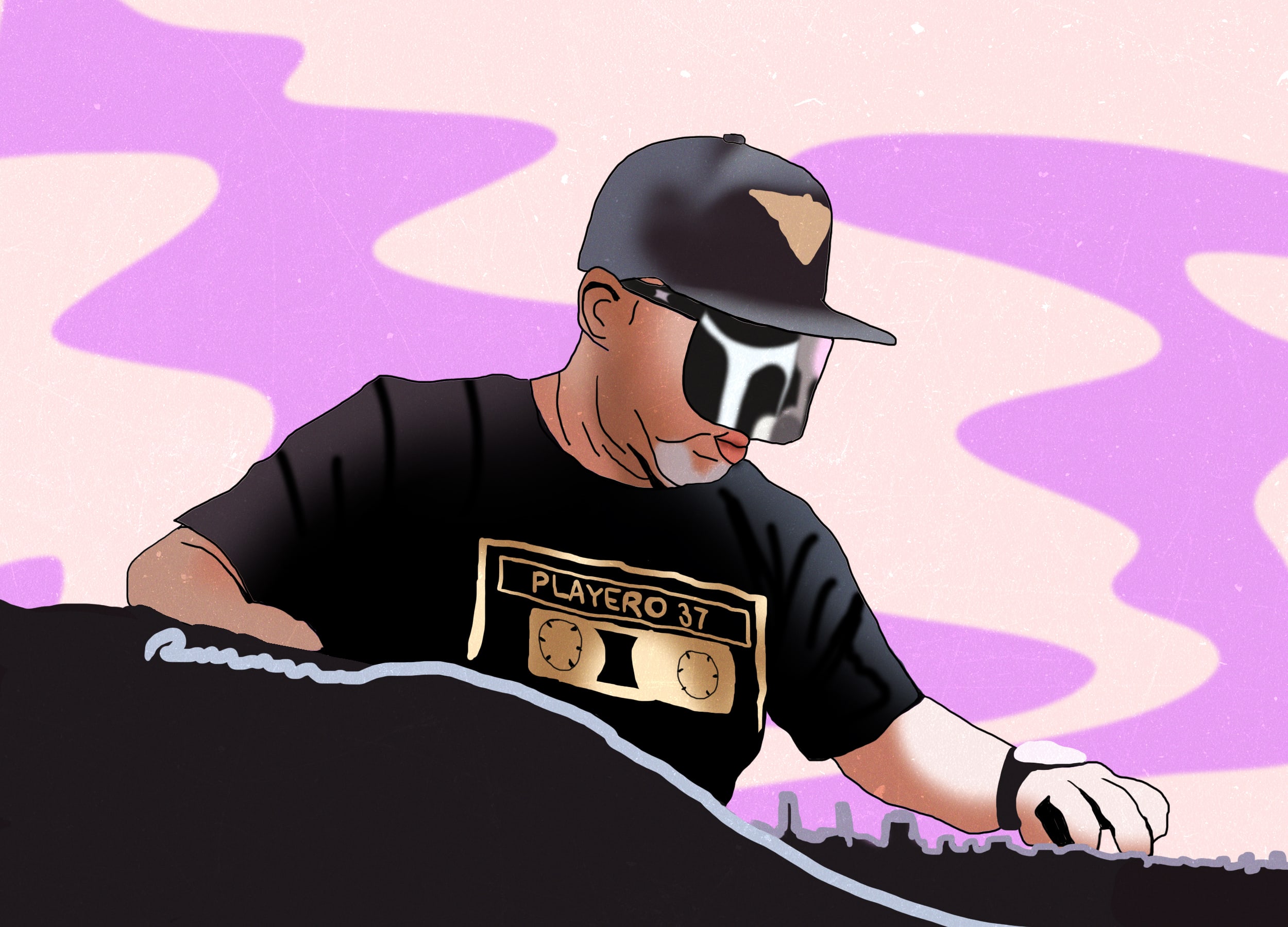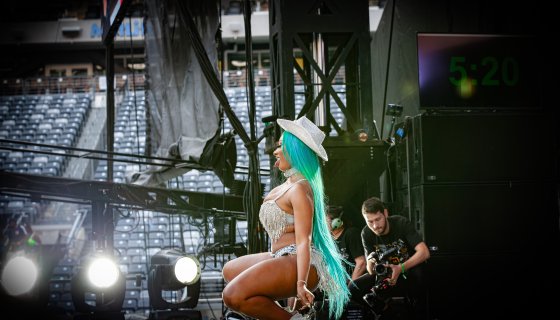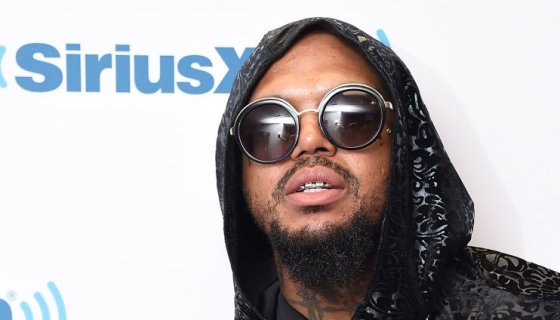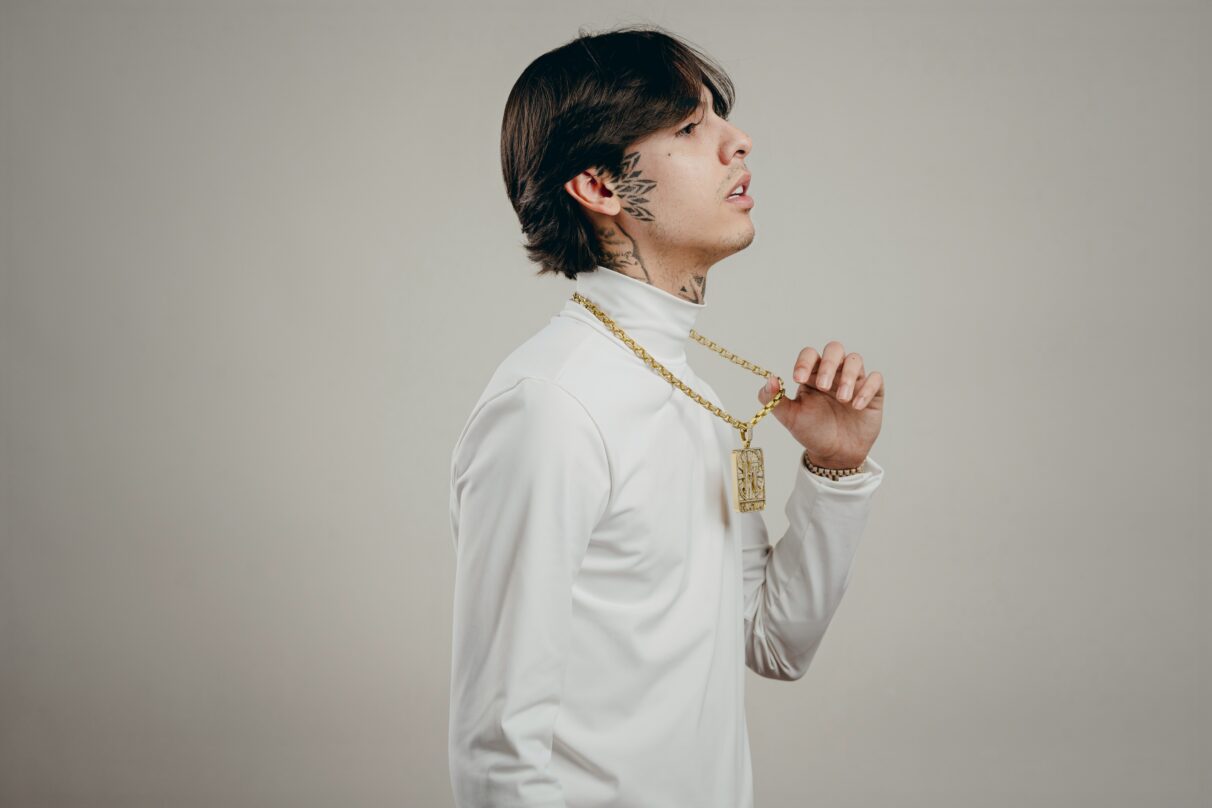

6 Songs That Prove DJ Playero Is One of the Essential Architects of Reggaeton
Few artists can say they have been active since the inception of el movimiento and continue to thrive within the scene. One of the undisputable pioneers and architects of the sound is DJ Playero, whose impact on the music, aesthetic, and even the names of the legends that conform the genre were directly affected by his contributions. Legends like these rarely live long enough to see their impact, but Playero has witnessed the rise of reggaeton as a world-dominating sound.
Along with DJ Negro’s The Noise, Playero built an underground sound from San Juan that soon transcended borders. He got his start in the early ‘90s as a DJ and producer in his native Puerto Rico. Initially, his style leaned toward freestyle, reggae, and dancehall, yet, he showed a growing fascination with hip-hop and electronic music subgenres, which he would eventually blend into what we now know as reggaeton. His first break came by producing tracks for artists like Lisa M and Vico C.
But it was on his underground mixtapes where he got loose to experiment with rhythms and sounds, truly finding his voice in the process. Playero would take local, unsigned talent to handle vocals over his beats, nurturing artists that went onto bigger things. Most notably, he gave Daddy Yankee some of his first opportunities to shine on record. Other figures that got their break thanks to DJ Playero were Nicky Jam, Tempo, Master Joe, Wiso G, and many others.
His prolific run of underground mixtapes — literally cassettes that were sold and traded on the island — made him a go-to producer for the early sound of reggaeton. He was there when perreo was stigmatized by authorities and had his releases raided by police. He was also fortunate enough to find recognition once the genre hit its commercial stride. Since then, Playero has become an ambassador of the original sound, still DJing at various events. He will be playing Remezcla House in Palm Springs, CA, on Friday, April 15, demonstrating why his name is one of the most lauded in el movimiento history. Here are six songs that prove Playero is a legend in the history of reggeaton.
Lisa M – “Ritmo y Sabor”
Playero started in the Puerto Rico scene by DJing and producing a wide range of music. While some of his earliest credits went on hip-hop-centric projects, like Vico C and Brewly MC, perhaps the first time he showed what he could do was on Lisa M’s Flavor of Latin. Playero claims he helped produced some tracks on her previous album, No Lo Derrumbes, which boasted hits like “Tu Pum Pum” and “Menéalo,” yet the music leaned towards established genres like freestyle and merengue. For her subsequent album, Playero displayed a bolder production voice on tracks like “Ritmo y Sabor,” fusing dancehall and reggae with nods to Puerto Rican music here and there, most notably on the way the vocals blend with the rhythms. Playero was still a few years away from seamlessly combining everything, but you can hear the genesis of his signature song here.
Daddy Yankee – “Ragga Moofin Mix”
DJ Playero and Daddy Yankee go way back, and one can argue that they both needed each other to truly set off what they were capable of. The future Big Boss was one of the local, unsigned talented emcees that Playero recruited to provide vocals on his mixtape tracks, along with Rey Pirrín, Wiso G, OG Black, Baby J, and many others. When hearing Playero on the early ‘90s Underground mixtape series, one can find him developing his skills as a vocalist. Yet, there are shivers-inducing moments even this early on in his career. Playero gives the first portion of 37 Underground’s side b — titled “Raga Moofin Mix” — to Daddy Yankee, throwing him classic reggae and dancehall beats to do his thing, responding with technical proficiency and charisma. These 10 minutes remain a masterclass in hooky flow brilliance and an early classic from two titans of el movimiento.
Blanco Flake – “Besa Tu Cuerpo”
DJ Playero is known to be one of the architects of the sound of reggaeton and a track like “Besa Tu Cuerpo” is one early example. Playero made his bones DJing freestyle while also producing hip-hop, eventually fusing elements of dancehall, reggae, house, and other styles of music to create the underground perreo genre. While tracks previous to “Besa Tu Cuerpo” leaned towards one genre or the other, this song is proof of what will eventually become the sound that would take over the world. The rhythm pattern of the drums on “Besa Tu Cuerpo” are based on the dembow beat from dancehall. However, the drum sounds owe more than a little to classic rap, while the samples and digital bass are heavy on the electronic side, unlike most music found in the Caribbean — this was clearly a unique art form. Blanco Flake rides the music with a blend of Panamanian and Jamaican flow, also pointing to a way of delivering vocals that would define el movimiento’s old school.
Baby Shabba – “Champion”
Playero’s genius lies in mixing various genres to create something unique — a blend that makes it irresistible for people to stand still while it’s playing. By fusing reggae, dancehall, hip-hop, house, and other styles, he helped establish the sound of reggaeton that, in many ways, continues to be the golden standard. However, a track like “Champion” proves that he was not done experimenting with the music. On this cut from his New Era mixtape, Playero switches from boom-bap beats to the classic dembow rhythm back and forth, making something that hadn’t been heard before or since, fusing old-school rap with perreo as if they were battling one another. Fortunately for the producer, he found the perfect emcee to drive the song and make it what it became, as Baby Shabba’s rough, dancehall-inspired delivery gets the point across and glides both styles into a singular vision.
Tempo – “Donde Están Las Girlas”
While Playero’s musical talents are undeniable, his ability to birth music that we still recognize as reggaeton today is just one aspect of why he is such a legendary figure. The other most important aspect of his career is his instinct to recognize talent among young people and nurture it to maximize their potential. Famously, he did just that with Daddy Yankee, helping a towering figure of el movimiento find his path to the top, yet he wasn’t the only one. Tempo is one of those legendary artists from reggaeton’s first wave that still gets respect among those in the know and someone who figures prominently in Playero’s discography. An early hit for both was “Donde Están Las Girlas,” a song built around a sample of Reel 2 Real’s house pop classic “I Like To Move It” and runs with it, delivering hard-edged rhymes, reggae-inspired flow, and even some singing parts, pointing to the future of Playero’s work and the genre as a whole.
Nicky Jam – “Descontrol”
As mentioned previously, one of Playero’s talents that made him a legend behind the board and a historical figure for el movimiento was his ability to discover and encourage talented people behind the mic. One such figure was Nicky Jam, who started appearing on Playero mixtapes when he was still a teenager. A track like “Descontrol” demonstrates why he has become one of the most enduring artists in reggaeton since its early years, riding the song’s digital beat to interpolate the melody of Stevie Wonder’s “I Just Called To Say I Love You” to make it snap. “Descontrol” also demonstrates how Playero was evolving in his game, delivering songs that took their time to develop and flourish with hooks as well as rhymes, something that helped reggaeton become a dominating sound in the years that followed.
For more information on Remezcla House, in which DJ Playero will be performing, click here.



